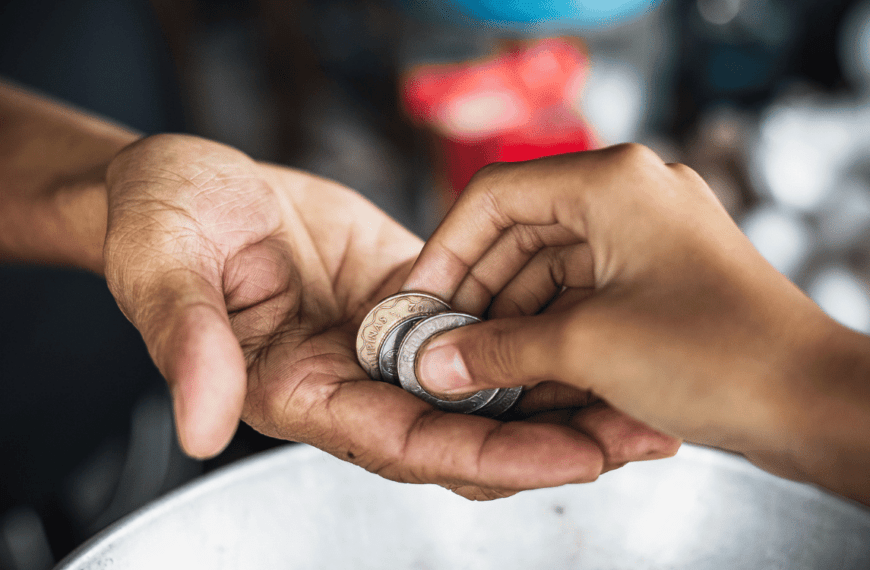1. What is sustainable giving?
see all the answers below
2. Why is saying “no” important in giving?
3. How can I encourage reciprocity when giving?
4. What’s the difference between giving someone a fish and teaching them how to fish?
5. How can I shift the focus from the recipient to the impact of my giving?
In our previous exploration of giving, we delved into the delicate dance between ego and generosity. We established that true giving stems from a place of abundance, empowering both the giver and the receiver. But the journey of giving doesn’t end there. This sequel blog post tackles the question: how do we ensure our acts of generosity are sustainable and cultivate lasting appreciation rather than foster entitlement?

The Law of Diminishing Returns in Generosity
The initial act of giving often sparks a surge of gratitude in the recipient. This appreciation fuels a positive feedback loop, motivating you to continue giving. However, as the blog post rightly points out, the emotional response can diminish with each subsequent act of giving. Let’s revisit the analogy of giving and returns:
- First Time: You give freely, creating a sense of appreciation and establishing a positive connection.
- Second Time: The recipient anticipates your generosity, fostering a pleasant expectation.
- Third Time: The expectation solidifies, potentially morphing into entitlement.
- Fourth Time + Onwards: Entitlement breeds resentment if giving ceases.
What is sustainable giving?
Sustainable giving is about giving in a way that creates long-term positive change, for both the giver and the receiver.
The key to navigating this potential pitfall lies in understanding the concept of sustainable giving. It’s about fostering a long-term relationship built on mutual respect and growth rather than a transactional one.
Shifting the Focus: From Recipient to Impact
One way to achieve sustainable giving is to shift the focus from the recipient to the impact of your generosity. Ask yourself: what outcome do you hope to achieve through your giving? Is it to empower the recipient towards self-sufficiency? To nurture a sense of community responsibility? You create a more sustainable framework by aligning your giving with a specific goal.
Why is saying “no” important in giving?
Saying no allows you to give sustainably, preventing burnout and ensuring you have resources to help others in the long run.
Here are some practical ways to implement this approach:
- Invest in Skills, Not Just Solutions: Instead of simply handing someone a fish, teach them how to fish. Provide resources or mentorship opportunities that equip them with the tools they need to thrive in the long run.
- Foster Collaboration: Giving doesn’t have to be a one-way street. Encourage recipients to contribute their skills or time to a shared cause. This fosters a sense of ownership and mutual investment.
- Set Clear Boundaries: Be upfront about your limitations, and don’t hesitate to say no when necessary. This fosters respect and prevents unrealistic expectations.
How can I encourage reciprocity when giving?
Thank recipients for their efforts, and provide opportunities for them to contribute their skills or time to help others.
The Power of “No” and the Importance of Boundaries
The ability to say no is an essential yet often overlooked aspect of sustainable giving. When you consistently give beyond your means, you risk resentment and burnout. Setting boundaries protects your well-being and ensures you have the resources to continue giving in the long run.
Here are some tips for setting healthy boundaries:
- Communicate Openly: Be honest about your limitations and explain why you can’t always fulfil every request.
- Offer Alternatives: If you can’t give financially, perhaps you can offer your time or expertise.
- Direct People to Resources: Help them find alternative sources of support that can meet their needs.
Remember, a sustainable “no” is far more empowering than a resentful “yes.”
What’s the difference between giving someone a fish and teaching them how to fish?
Giving someone a fish provides short-term help, while teaching them to fish equips them with long-term skills for self-sufficiency.
The Reciprocity of Giving: Cultivating Gratitude
True generosity is a two-way street. While the focus should be empowering others, creating a space for reciprocity can deepen the connection and foster lasting appreciation. Here are some ways to encourage reciprocity:
- Express Appreciation: Thank the recipient for their efforts, no matter how small.
- Offer Opportunities to Give Back: Encourage them to volunteer their time or skills to help others within the community.
- Celebrate Milestones: Acknowledge and celebrate the progress made possible by your collaborative efforts.
By fostering a culture of reciprocity, you move beyond a simple giver-receiver dynamic and create a network of mutual support.
How can I shift the focus from the recipient to the impact of my giving?
Consider what outcome you hope to achieve. Are you empowering someone, nurturing a sense of community responsibility, or something else? Align your giving with a specific goal.
Conclusion: Sustainable Giving – A Journey, Not a Destination
Sustainable giving is a continuous journey, not a one-time act. It requires intentionality, clear communication, and a focus on long-term impact. By embracing the power of “no,” fostering reciprocity, and shifting the focus to empowerment, we can cultivate a culture of giving that benefits both the giver and the receiver. Remember, true generosity is a gift that keeps on giving, enriching the lives of everyone involved.











